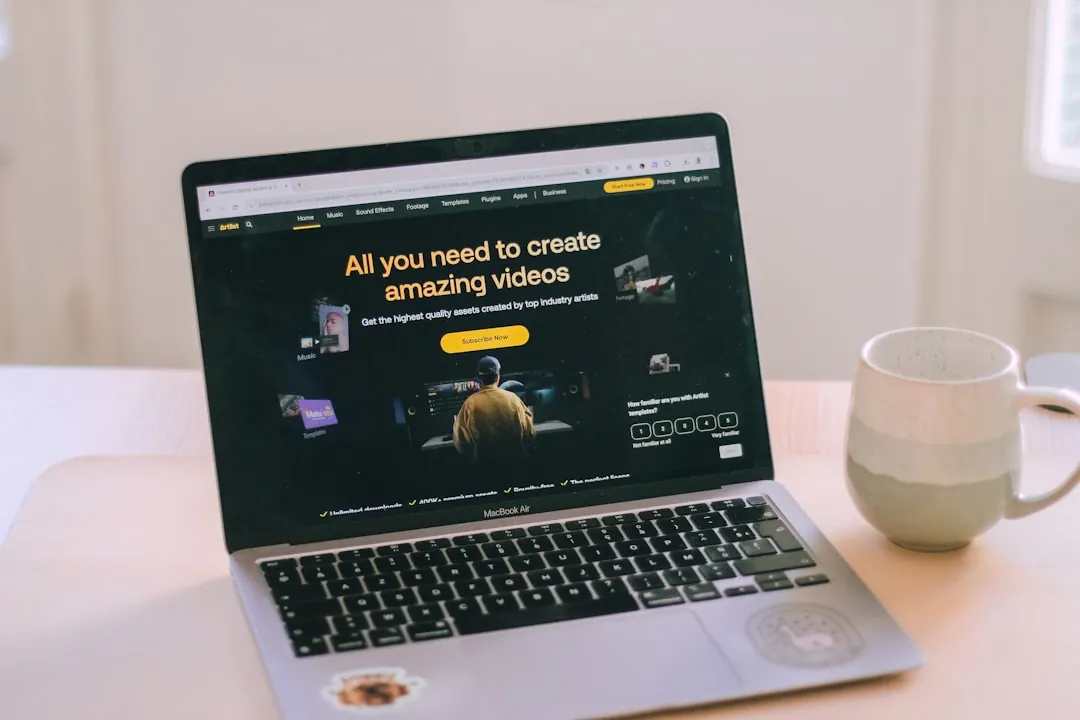Hey there, fellow hustlers! Ever dreamed of making money online through affiliate marketing but thought you needed a fancy website to get started? Well, I'm here to tell you that you can absolutely dive into the world of affiliate marketing without one.
For years, I believed the myth that a website was a prerequisite. I spent countless hours tinkering with WordPress themes, optimizing SEO, and building content, only to find myself overwhelmed and with very little to show for it. Then, I stumbled upon a different path – a website-free approach. And let me tell you, it was a game-changer.
Now, I'm not saying a website is bad for affiliate marketing. It’s fantastic for long-term brand building and authority. But if you're just starting out, bootstrapping, or prefer a more nimble approach, this blog post is for you. We’ll break down how to do affiliate marketing without a website, the strategies that actually work, and the tools you need to succeed.
Let’s get started!
Why Go Website-Free with Affiliate Marketing?
The allure of affiliate marketing is undeniable: promote other people's products, earn a commission on every sale, and build a passive income stream. But the traditional method of creating a website can be a huge barrier to entry. Here’s why skipping the website might be the right choice for you:
- Lower Barrier to Entry: Creating a website takes time, money, and technical skills. Without a website, you can jump in and start promoting products almost immediately.
- Faster Results: You can experiment with different offers and strategies more quickly, allowing you to optimize your campaigns and see results faster.
- Less Maintenance: Websites require constant maintenance, updates, and security checks. Without a website, you eliminate all of those headaches.
- Flexibility and Agility: You can adapt to changing market conditions and trends more easily when you're not tied to a fixed website.
- Cost-Effective: Building and maintaining a website involves hosting fees, domain registration costs, and potentially the cost of design and development.
Think of it like this: building a website is like constructing a brick-and-mortar store. It takes time, resources, and careful planning. Website-free affiliate marketing is like setting up a pop-up shop. It's quick, flexible, and allows you to test the waters without a huge investment.

Core Strategies for Affiliate Marketing Without a Website
Okay, so how do you actually make money with affiliate marketing without a website? Here are the key strategies:
Social Media Mastery
Social media platforms are a goldmine for affiliate marketers. Here’s how to use them effectively:
- Choose the Right Platform: Don't try to be everywhere at once. Focus on the platform where your target audience spends the most time. If you're promoting beauty products, Instagram or TikTok might be a good choice. If you're targeting professionals, LinkedIn could be more effective. I personally found early success on Facebook because I understood the groups and communities my ideal customer was active in.
- Build a Following: Provide valuable content, engage with your audience, and build a community. Share tips, advice, and insights related to the products you're promoting.
- Use Affiliate Links Strategically: Don't just spam your followers with affiliate links. Integrate them naturally into your content. For example, if you're reviewing a product, include your affiliate link in the description. Use link shorteners like Bitly or Rebrandly to make your links more appealing and track their performance.
- Run Contests and Giveaways: Contests and giveaways are a great way to generate buzz and attract new followers. Offer a product you're promoting as a prize and include your affiliate link in the entry form.
- Paid Advertising: Consider running targeted ads on social media to reach a wider audience. Facebook Ads and Instagram Ads are particularly effective for affiliate marketing.
Actionable Tip: Start by creating a content calendar for your chosen platform. Plan out your posts in advance and make sure they're aligned with your affiliate marketing goals. For instance, Monday could be "Tip Tuesday," Wednesday could be "Product Spotlight," and Friday could be "Weekend Deals."
YouTube Channel (Without a Website Focus)
While a dedicated website is absent, creating a YouTube channel is perfectly acceptable and a highly effective method.
- Create Valuable Content: Focus on creating videos that provide value to your audience. This could include product reviews, tutorials, how-to videos, or comparisons.
- Optimize Your Videos: Use relevant keywords in your titles, descriptions, and tags to help people find your videos.
- Include Affiliate Links in the Description: Include your affiliate links in the description of each video. Make sure to disclose that you're using affiliate links.
- Engage with Your Audience: Respond to comments, answer questions, and build a community around your channel.
- Promote Your Videos: Share your videos on social media and other platforms to reach a wider audience.
I remember the first affiliate income I made through Youtube. It was a review of a specific drone that I bought and loved. I wasn't an expert, but I shared my genuine experience and included an affiliate link in the description. That simple video generated consistent sales for months.
Email Marketing (Building a List is Key!)
Don’t underestimate the power of email marketing. It’s one of the most effective ways to connect with your audience and promote affiliate products.
- Build an Email List: Offer a free lead magnet (e.g., ebook, checklist, template) in exchange for email addresses. You can use tools like ConvertKit, Mailchimp, or GetResponse to create signup forms and manage your email list. Landing pages are still acceptable, but avoid a full blown website.
- Create Engaging Email Content: Don't just send promotional emails all the time. Provide valuable content, such as tips, advice, and industry news.
- Segment Your List: Segment your email list based on your subscribers' interests and preferences. This allows you to send more targeted and relevant emails.
- Use Affiliate Links Strategically: Include affiliate links in your emails, but make sure they're relevant to the content you're providing.
- Automate Your Email Marketing: Use email automation tools to send automated email sequences to your subscribers. This can save you a lot of time and effort.
Actionable Tip: Create a compelling lead magnet related to the products you're promoting. For example, if you're promoting fitness products, you could offer a free workout plan or a healthy recipe guide.
Leveraging Online Communities (Forums, Reddit, Quora)
Participating in online communities can be a great way to reach a targeted audience and promote affiliate products.
- Find Relevant Communities: Look for forums, subreddits, and Q&A sites related to your niche.
- Provide Value: Don't just spam the communities with affiliate links. Answer questions, offer advice, and share your expertise.
- Include Affiliate Links Naturally: When appropriate, include your affiliate links in your responses. Make sure to disclose that you're using affiliate links.
- Build a Reputation: Build a reputation as a helpful and knowledgeable member of the community. This will make people more likely to trust your recommendations.
For example, if you're promoting gardening products, you could participate in gardening forums and answer questions about plant care. When someone asks for recommendations for a specific product, you could include your affiliate link.
Paid Advertising (Carefully!)
While this requires an investment, paid advertising can be a powerful way to drive traffic to your affiliate offers.
- Choose the Right Platform: Google Ads, Facebook Ads, and other platforms can be effective for affiliate marketing.
- Target Your Ads: Target your ads to reach the right audience based on their demographics, interests, and behaviors.
- Create Compelling Ad Copy: Write ad copy that is attention-grabbing and persuades people to click on your affiliate links.
- Track Your Results: Track your ad campaigns carefully to see which ads are performing well and which ones aren't.
- Be Compliant: Ensure your ads comply with the platform's advertising policies.
Important Note: Be extremely cautious with paid advertising. Many affiliate programs prohibit or restrict the use of paid advertising. Always check the terms and conditions before launching a campaign. Also, start small and test your campaigns thoroughly before scaling up.

Essential Tools for Website-Free Affiliate Marketing
While you don’t need a website, you’ll still need some tools to help you manage your campaigns and track your results. Here are some essential tools:
- Link Shorteners: Bitly, Rebrandly. These tools allow you to shorten your affiliate links and track their performance.
- Email Marketing Platforms: ConvertKit, Mailchimp, GetResponse. These platforms help you build your email list, send engaging emails, and automate your email marketing.
- Social Media Management Tools: Hootsuite, Buffer. These tools allow you to schedule your social media posts and manage your social media accounts more efficiently.
- Analytics Tools: Google Analytics (for tracking traffic to your landing pages).
- Landing Page Builders: Leadpages, Instapage (for creating simple landing pages for lead magnets).
- Canva: For creating visually appealing graphics for your social media posts and ads.
The Key to Success: Providing Value
No matter which strategy you choose, the key to success in affiliate marketing without a website is to provide value to your audience. Don't just focus on selling products. Focus on helping people solve problems, learn new things, and improve their lives.
- Be Authentic: Be genuine and transparent in your interactions with your audience.
- Build Trust: Build trust by providing valuable content and being responsive to your audience's needs.
- Focus on Quality: Focus on promoting high-quality products that you genuinely believe in.
- Be Patient: It takes time to build a following and generate consistent income with affiliate marketing. Don't get discouraged if you don't see results immediately.
I’ve seen so many people fail because they’re only focused on the money. They spam their followers with affiliate links and provide no real value. That’s a surefire way to turn people off and damage your reputation.
Instead, think of yourself as a helpful resource. Provide valuable content, answer questions, and offer advice. When you do that, people will naturally be more likely to trust your recommendations and purchase products through your affiliate links.

Compliance and Disclosures: Keeping it Ethical
It's crucial to be transparent and ethical in your affiliate marketing efforts.
- Disclose Your Affiliate Relationships: Always disclose that you're using affiliate links. This is required by the FTC and other regulatory bodies.
- Be Honest and Accurate: Don't make false or misleading claims about the products you're promoting.
- Comply with Affiliate Program Terms: Make sure you understand and comply with the terms and conditions of the affiliate programs you're participating in.
- Protect Your Audience's Privacy: Be mindful of your audience's privacy and handle their personal information responsibly.
A simple disclaimer like "I may earn a commission if you purchase through my link" is usually sufficient. Transparency builds trust and helps you avoid legal issues.
Common Mistakes to Avoid
- Spamming Affiliate Links: Don't just spam your audience with affiliate links. This is a surefire way to turn them off.
- Promoting Low-Quality Products: Focus on promoting high-quality products that you genuinely believe in.
- Not Providing Value: Focus on providing value to your audience. Don't just focus on selling products.
- Ignoring Your Audience: Engage with your audience and respond to their questions and comments.
- Not Tracking Your Results: Track your campaigns carefully to see what's working and what's not.
Final Thoughts: You *Can* Do It!
Affiliate marketing without a website is absolutely possible. It requires a different approach, focusing on building relationships, providing value, and utilizing social media, email marketing, and online communities effectively.
Remember to be patient, persistent, and ethical. Focus on building a community around your niche and providing genuine value to your audience. With the right strategies and tools, you can absolutely achieve success in affiliate marketing without ever building a website.
Now, go out there and start earning! And don't forget to subscribe to Earn With Web for more tips and tricks on making money online. What are you waiting for? Start building that email list or creating that YouTube video today!
Frequently Asked Questions
-
Is affiliate marketing without a website sustainable long-term?
While it can be highly profitable, a website offers more long-term control and brand building. However, many people have built sustainable businesses without one. It depends on your goals and strategy.
-
Which social media platform is best for affiliate marketing?
It depends on your niche and target audience. Instagram and TikTok are great for visual products, while LinkedIn is better for professional services. Experiment and see what works best for you.
-
How much money can I make with affiliate marketing without a website?
The earning potential is unlimited. It depends on your niche, your traffic, and your conversion rates. Some people make a few hundred dollars a month, while others make thousands.
-
Do I need to be an expert in my niche to be successful?
No, but you need to be knowledgeable and passionate about your niche. You don't need to be an expert, but you need to be able to provide value to your audience. Share your experiences, learn from others, and stay up-to-date on the latest trends.
-
How do I find affiliate programs to join?
You can find affiliate programs through affiliate networks like ShareASale, CJ Affiliate, and Amazon Associates. You can also find affiliate programs by searching for "[your niche] affiliate program" on Google.
Ready to dive deeper? Check out these related articles on Earn With Web:
- [Internal Link to: How to choose the best affiliate marketing niche]
- [Internal Link to: Top affiliate marketing programs for beginners]
- [Internal Link to: Mastering social media marketing for profit]